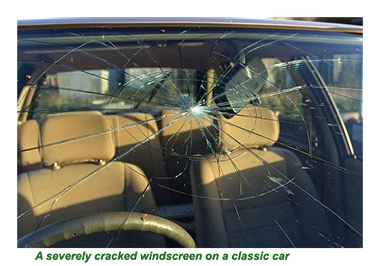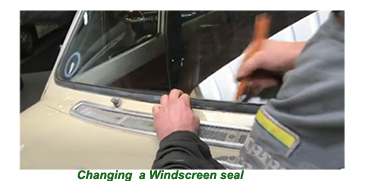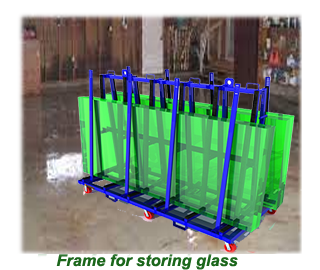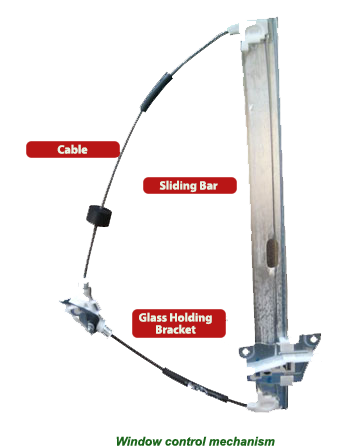<
 Anyone assessing a classic car before purchase should set aside sufficient time to check out the condition of its windows and wing mirrors.
Anyone assessing a classic car before purchase should set aside sufficient time to check out the condition of its windows and wing mirrors.
Windows, especially front and rear, can be expensive to replace with the rarer versions difficult to source.
 Front side windows are less likely to break. Some earlier models come with fitted with internal mechanisms that are very intricate and thus difficult to repair.
Front side windows are less likely to break. Some earlier models come with fitted with internal mechanisms that are very intricate and thus difficult to repair.
The stresses and strains of bringing a classic car's glasswork back to an acceptable condition is a challenge that may not have been high on the restoration list yet cannot be ignored.
It might be too much to hope that all the vehicle's windows are in good shape. The chances are that at least one may need some attention-usually to light scratches and shallow pits.
 After these minor repairs, all the vehicle glass can be given a good clean up and a polish using a chamois and chemical cleaners available at any accessory store.
After these minor repairs, all the vehicle glass can be given a good clean up and a polish using a chamois and chemical cleaners available at any accessory store.
The same thinking applies to the rubber seals and window channels. Window channels may seem like a secondary component until attempting to refit a window on a bent channel.
Rubber parts and window channels will always need to be ordered specially and may take weeks to arrive.
![]()
 Many restorers prefer to remove all the vehicle glass during a comprehensive restoration, irrespective of its condition.
Many restorers prefer to remove all the vehicle glass during a comprehensive restoration, irrespective of its condition.
The chances of the glass being cracked or broken during the weeks and months that the project can take to complete rise by the day.
Great care and considerable preparation must be invested to be ready to store the glass in a safe place under the proper conditions till the time has come to reinstall them in the finished vehicle.
 All the rubbers and channels removed should also be labelled and stored.
All the rubbers and channels removed should also be labelled and stored.
 While the side windows are less expensive and complicated to replace than the front and rear, they present their own unique challenges.
Until the end of World War Two, it was common for vehicles to have stationary side windows ," wind downs " became standard in family saloons and stations from then onwards.
While the side windows are less expensive and complicated to replace than the front and rear, they present their own unique challenges.
Until the end of World War Two, it was common for vehicles to have stationary side windows ," wind downs " became standard in family saloons and stations from then onwards. While having the ability to roll down the side windows on a pleasant summer day, especially before the days of air conditioning, if anything went wrong with the mechanism, it became a serious challenge to repair. Anyone picking up a classic car with its side window either jammed shut or open and somewhere between these two positions is more than likely buying themselves at least a minor headache.
To repair a side window manual open/close mechanism once again involves following a number of steps in the proper order.
![]()
The first step is to unscrew the garnish mouldings and channels around the windows. There will be several small chrome-plated screws to be removed, which must be stored in a safe place.
 Once the mouldings, channels and glass have been removed, the diagnosis stage can begin. Step one is to test the window crank ( the device used to roll up the window).
Once the mouldings, channels and glass have been removed, the diagnosis stage can begin. Step one is to test the window crank ( the device used to roll up the window).
 If the crank freewheels or the window does not budge, then the problems have been diagnosed with all that is required is to replace to solve it. When turning the crank, nothing happens except the sound of grinding metal; then, the chances are that the teeth may be stripped inside the crank.
If the crank freewheels or the window does not budge, then the problems have been diagnosed with all that is required is to replace to solve it. When turning the crank, nothing happens except the sound of grinding metal; then, the chances are that the teeth may be stripped inside the crank.
If the crank turns smoothly and silently, then it's probable that the problem lies within. To take a closer look, the window crank and door panel must be removed.
 The problem, in most cases, lies with the regulator cable, which has either jammed of snapped, causing the window to jam or fall inside the door.
The problem, in most cases, lies with the regulator cable, which has either jammed of snapped, causing the window to jam or fall inside the door.
It is possible to change just the cable, although most restorers prefer to replace the entire part.
Once the part has been changed and given a fresh coat of grease, the window will open and close as well as the day it rolled off the production line.
ex5

